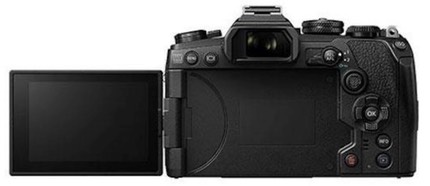Olympus is now giving you basically three choices of the same camera (E-M1, E-M1X, E-M5). Yes, there are some clear differences between the three, but Olympus is cutting things pretty slim and reusing a lot of the same parts and technology.

In some ways, that's good. Someone looking for a solid 20mp m4/3 DSLR-style camera with a deep feature set can pick the lower cost version with lessor construction, lighter weight, and some features missing (E-M5 m3), or the original high-end market camera in its latest iteration (the E-M1 m3), or a version of the same with an integrated vertical grip (E-M1X).
The question that comes up is this: does Olympus have enough volume to justify this three-similar-cameras approach? I'll address that some more in a bit, but first, let's get to the details of the latest camera.
The E-M1 m3 differs from its predecessor in these ways:
- TruePic IX processor has dual quad-cores (up from one)
- IBIS has increased sensitivity to 7 stops CIPA (7.5 with some lenses)
- 50mp handheld high-res shot feature
- The focus system has been reworked to add eye detect, performs better
- A thumb stick has been added for positioning the focus cursor
- Focus wrap-around is now allowed when moving the cursor (can be turned off)
- Face/Eye recognition has been improved, and includes face selection
- Starry Sky AF has been added for astrophotographers trying to focus at night
- Live ND has been added (basically multiple exposure, first in the E-M1X)
- The shutter is now tested to 400k activations, up from 200k
- 1080P at 120 fps
- Electronic IS for video in addition to IBIS
- OM-Log400 is a new style for video shooting
- View Assist restores full color gamut to BT.709 on display when using Log
- Camera and lens firmware can be updated via mobile app (OI.Share)
The good news for E-M1 m2 users is that the cheese hasn't moved (e.g. controls), and we get a new piece of cheese (thumb stick).
I include the full list of changes here for a reason: are these enough to get E-M1 m2 buyers like me to pony up US$1800 for the m3? And how many of those that were waiting for a new camera with many of these features have already bought an E-M5 m3 or E-M1X? That's a good question, I think. It's not a question of whether the E-M1 m3 has a nice complete feature set or high performance. It's whether there are enough folk in the pool willing to swim to the bar for another drink.
I note that a lot of Oly users are already calling this new camera the E-M1 Mark II Mark II. I'm not sure that's fair. Specifications alone do not make a complete statement about a camera. Back when the Nikon D810 came out, a lot of people were disappointed because, on paper at least, it didn't seem like anything much more than a warmed over D800E. In actual practice, the changes were well considered, more subtle and deeper than could be seen on a spec page, and which made the D810 a clearly better camera than the D800E.
So I caution people to get too caught up in the specification differences without actually handling and shooting with the new camera. That's something I'll be getting around to later this spring, so I'm going to try to reserve my own judgment here for now.
Still, we have three pretty similar cameras at different price points. The E-M5 m3 body is US$1200. The E-M1 m3 body is US$1800. The E-M1X body is US$3000, though it's been discounted to US$2500 recently. Those are expensive bar drinks for the small sensor camera pool partier, and I'm not sure the changes in ingredients between the drinks justify the price levels. Which also means they're less likely to attract new-to-m4/3 customers.
So, the basic question is "who will be buying the E-M1 m3 and why?" The answer I keep coming up with is "fewer and fewer people, and because they're loyal to Olympus."
Aside: Many are bemoaning the fact that Olympus hasn't gone to a BSI sensor. After talking with engineers for a bit about this, I've personally come to the conclusion that BSI wouldn't amount to much, if any, image quality benefit for Olympus. There are quite a few reasons for that, but one key one is telecentricity. The Olympus cameras and lenses have all been designed to present light to the sensor at near perpendicular from the beginning. Any benefit from BSI's increased fill factor would be minimal with a sensor of this size, and the thick filter stack in front of the sensor on Olympus cameras means that you wouldn't get clear benefits from non-telecentric light. As I wrote when Nikon (and Sony) went to BSI for full frame, the real reason for that wasn't image quality, it was more to do with bandwidth. Reversing the sensor and putting the data/power lines below the photo diode layer allows for you to do things that move data faster.
Because of diffraction recording impacts, we probably also don't want more pixels on the m4/3 sensor size, either.
So I'm finding that Olympus has engineered themselves into a corner, at least concerning image sensor.
Along with the E-M1 m3 Olympus announced the 12-45mm f/4 Pro lens, a somewhat smaller and lighter option than the f/2.8 Pro version, and a bit smaller than the Panasonic 12-35mm f/2.8 size, too.
